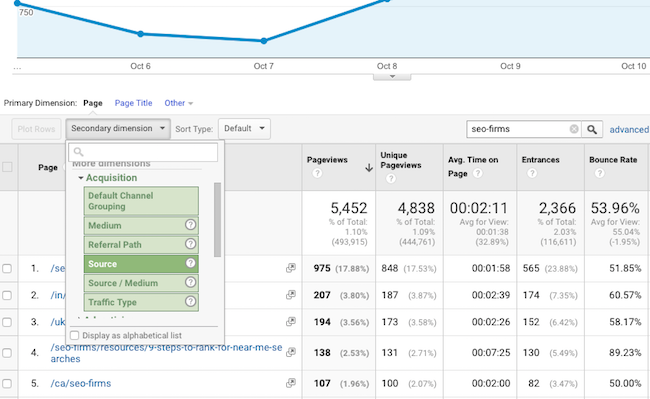

Updated January 2, 2025
Content marketing can bring a multitude of benefits to your company. Your target customers' content preferences, your company's resources, and a content distribution strategy are among the considerations your company needs to review or questions you need to ask when creating your content marketing strategy.
Updated August 16, 2022
Content marketing can bring a multitude of benefits to your company. Your target customers' content preferences, your company's resources, and a content distribution strategy are among the considerations your company needs to review or questions you need to ask when creating your content marketing strategy.
Looking for a Digital Marketing agency?
Compare our list of top Digital Marketing companies near you
By offering useful and free resources, content marketing can establish a foundation of trust between a brand and its potential and existing customers.
Sometimes, however, in the race to create more content, companies forget that the key to success for content strategy is quality rather than quantity.
It's important to create content not just to have it or meet a publishing schedule. Instead, your content should create value for your business and customers.
Consider these 10 marketing strategy questions before you develop your marketing plan.
All these questions should be top of mind for any marketing manager or team.
Before you create any content, you need to determine the objectives of your overall content marketing strategy.
Your content marketing strategy should have a true purpose and a clear goal, for example, such as driving traffic to your website.
If you determine what you want your content marketing strategy to deliver, it is a lot easier to prioritize and shape how you are going to get there.
Ask your team, target audience, and other stakeholders key marketing questions to see if you can put together a digital marketing plan for your business.
Understanding your buyer personas is crucial to determining the kind of content you need to develop for the ideal customer.
It’s essential for content marketers to understand what resonates with their customers.
One of the most important factors is how different demographics react to specific types of content. For example, content consumption habits platform differ by generation.
Content marketers must understand what kind of content their target audience prefer and develop the content accordingly. Consider the following questions to structure your content in a way that best engages your target audience.
Read this: ‘How to Create an Effective Buyer Journey Map’
Society is shifting towards a more visual form of storytelling. More than half of people are visual learners, and our brain processes visual information 60,000 times faster compared to text.
Take these statistics into consideration when creating your content strategy. Video and other visual elements allow you to engage with your audience more effectively than other forms of content.
Read through the 2022 Small Business Advertising Report to see how companies use visual content to their advantage.
Your content marketing strategy needs to be flexible and include a content production and distribution plan.
Consistently producing high-quality content is key to your company meeting modern customers' demands. To accomplish this, establish an efficient workflow to move your content production process forward.
A content workflow streamlines your content marketing process so that you constantly produce high-quality, marketable content. Its core components include:
A content workflow also clarifies each involved party’s role in the content creation process. When this process runs efficiently, the brand is able to meet its content demands and provide customers with the material they seek.
Additional Reading: ‘5 Cross-Promotion Ideas that Still Work like a Charm’
Effective content marketing engages your target audience and drives profitable customer action.
However, you won’t see an increase in organic traffic from day one. Expect at least 3-6 months to see the results of your content marketing strategy.
Content marketing is not designed to convert leads immediately. The goal is long-term, continuous engagement. The more time your leads spend interacting with your content, the more educated they become.
If you can drive engagement and earn high-quality backlinks to your content, the authority you build through content marketing will continue to drive traffic even after you stop creating and promoting the content.
Eventually, an educated lead will see something relevant that triggers a response.
Content marketing may take longer to convert leads, but over time, it significantly drives down conversion costs and increase brand awareness for your services.
Distributing your content involves research and planning. Use the following tactics for choosing your distribution plan:
Influencer marketing is also a strategy for businesses. Over recent years, its become a popular marketing strategy to attract new customers.
However, you decide to distribute your content, make sure your marketing plan meets where your target audience is.
Content marketing is a long-term strategy. Without proper budgeting, you cannot take it forward.
Before setting your budget, it is important to establish a content strategy with concrete goals. Specifically, you need to determine how to measure content performance.
A few ways to measure content performance are tracking the likes, shares, and comments a particular post receives.
Likes and shares, for example, are indicators of your content engagement and popularity among your audience.
The number of comments under the post demonstrates the level of content engagement even better than social likes and shares do. It takes more time to write a comment than to like or share a post. So, if a reader is motivated enough to express his/her opinion in a comment section, it is often a good sign.
You can also measure content performance through traffic metrics: volume, source, and referral path. Analyzing traffic sources allows you to identify which marketing channels and strategies are working best for your content distribution.

Use a tool such as GA4 to measure traffic metrics.
There are various tools and resources that can help you in different phases of your content marketing strategy.
All of these tools are a resource for crafting a great marketing strategy and plan.
Research your competitors content to determine your organization’s competitive advantages. Study their content models and the sort of engagement they earn through their content efforts.
It's important to ensure your strategy and messaging are uniquely yours compared to your close competitors in order to separate yourself in the eyes of your customers.
A pain point is a particular problem that your prospective customer experiences. You can think of it as a plain and simple problem.
Pain points generally are grouped into 4 categories:
Understanding these categories enables you to think about how to position your product or company as a solution to their problems.
For example, if the pain points of your prospect are primarily financial, you could highlight your product’s features within the context of a lower monthly subscription plan.
Asking these 10 questions for marketing strategy helps you execute the strategies to achieve your content marketing goals.
Instead of thinking about your content as just another marketing activity, think about the experience you want to provide. The experience you create for your customers is what they remember and determines whether they want to come back again.
Is it your first time putting together a marketing plan? Browse our directory of digital marketing agencies.
Additional Reading:


